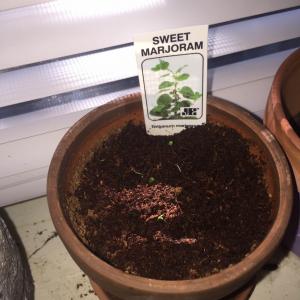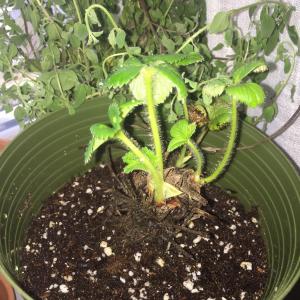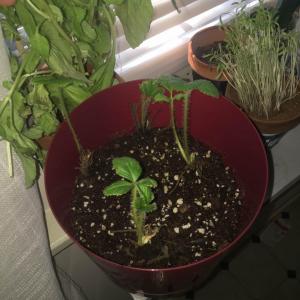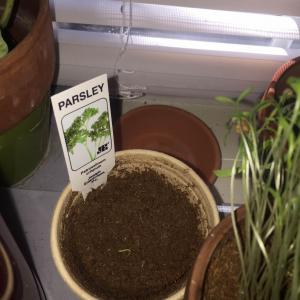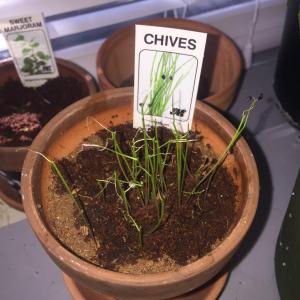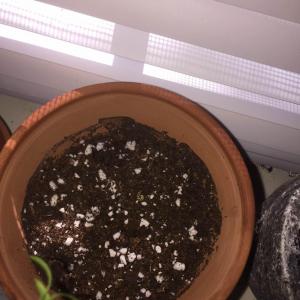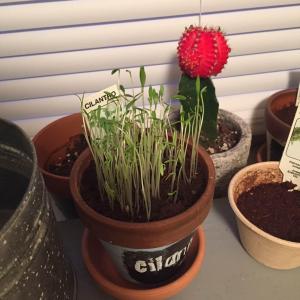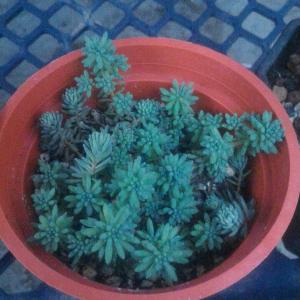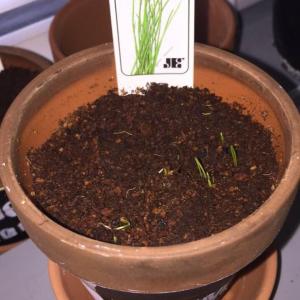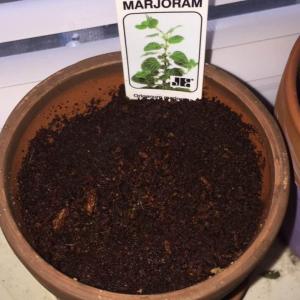文章
Miss Chen
2018年01月18日

Description: This plant is a spring annual, consisting of a small rosette of leaves up to 6" across and one or more flowering stalks up to 18" tall. Individual plants can bloom while they are a remarkably small size (only 2" across). The basal leaves are up to 3" long and ¾" across. They are light green, oblanceolate, and often pinnatifid with shallow lobes that are pointed at their tips. Their margins are often ciliate, slightly undulate, and sparingly dentate. Each flowering stalk is unbranched and devoid of leaves; it is largely hairless, although there may be a few scattered hairs along its length, especially near the top. Both the basal leaves and flowering stalks contain a white latex.
Each stalk terminates in a flowerhead about ½" across. This flowerhead consists of several spreading ray florets that are truncate with 5 teeth at their tips; these florets are bright golden yellow. The base of each flowerhead consists of 9-18 floral bracts in a single series; these bracts are lanceolate and about ¼" in length. They are erect while the flowerhead is blooming, but eventually become reflexed when the achenes mature. The blooming period occurs from mid-spring to mid-summer and lasts about 2-3 months for a colony of plants. The small achenes are bullet-shaped (tapered at the base, but truncate at the top). Each achene has 5 small scales and a tuft of 5 hairs at its apex; the hairs are longer than the scales. These achenes are distributed by the wind. The root system consists of a tuft of fibrous roots. This plant spreads by reseeding itself.
Cultivation: The preference is full sun, mesic to dry conditions, and an acidic sandy soil. Thin rocky soil is also acceptable if it doesn't consist of limestone.

Range & Habitat: The native Dwarf Dandelion occurs occasionally in sandy areas in the northern half of Illinois, otherwise it is uncommon or absent (see Distribution Map). Habitats include mesic to dry sand prairies, sandy savannas, sand dunes, sandy fields, sandy areas along paths and roadsides, and rocky glades without limestone. Occasional wildfires and other kinds of disturbance are probably beneficial in maintaining populations of this plant.
Faunal Associations: Information about floral-faunal relationships for this species is limited. It seems likely that the flowers are visited by various kinds of bees for nectar and pollen; they may attract butterflies and skippers as well.
Photographic Location: Along a sandy path in a burnt-over savanna in Iroquois County, Illinois.

Comments: Dwarf Dandelion is an adorable little plant that superficially resembles the common lawn weed, Taraxacum officinale (Dandelion). However, the Dwarf Dandelion has smaller flowerheads and light green basal leaves. There are several other Krigia spp. in Illinois; some differ from the Dwarf Dandelion by their flowering stalks, which can be branched with a few cauline leaves. The Dwarf Dandelion has unbranched flowering stalks that are without leaves. A species that doesn't occur in Illinois, Krigia occidentalis (Western Dwarf Dandelion), has the same kind of flowering stalks, but it has only 5-8 floral bracts at the base of each flowerhead. Another useful characteristic to consider are the number of hairs on the achenes: Dwarf Dandelion has only 5 hairs (or bristles) at the apex of each achene, while other Krigia spp. in Illinois have 20 or more hairs on the apex of their achenes. An exception is Krigia caespitosa (Opposite-Leaved Dwarf Dandelion), which has achenes without tufts of hair. Identifying the numerous species in Chicory Tribe of the Aster family can be tricky; most of these species have flowerheads with yellow ray florets and rosettes of basal leaves that appear similar to each other.
Each stalk terminates in a flowerhead about ½" across. This flowerhead consists of several spreading ray florets that are truncate with 5 teeth at their tips; these florets are bright golden yellow. The base of each flowerhead consists of 9-18 floral bracts in a single series; these bracts are lanceolate and about ¼" in length. They are erect while the flowerhead is blooming, but eventually become reflexed when the achenes mature. The blooming period occurs from mid-spring to mid-summer and lasts about 2-3 months for a colony of plants. The small achenes are bullet-shaped (tapered at the base, but truncate at the top). Each achene has 5 small scales and a tuft of 5 hairs at its apex; the hairs are longer than the scales. These achenes are distributed by the wind. The root system consists of a tuft of fibrous roots. This plant spreads by reseeding itself.
Cultivation: The preference is full sun, mesic to dry conditions, and an acidic sandy soil. Thin rocky soil is also acceptable if it doesn't consist of limestone.

Range & Habitat: The native Dwarf Dandelion occurs occasionally in sandy areas in the northern half of Illinois, otherwise it is uncommon or absent (see Distribution Map). Habitats include mesic to dry sand prairies, sandy savannas, sand dunes, sandy fields, sandy areas along paths and roadsides, and rocky glades without limestone. Occasional wildfires and other kinds of disturbance are probably beneficial in maintaining populations of this plant.
Faunal Associations: Information about floral-faunal relationships for this species is limited. It seems likely that the flowers are visited by various kinds of bees for nectar and pollen; they may attract butterflies and skippers as well.
Photographic Location: Along a sandy path in a burnt-over savanna in Iroquois County, Illinois.

Comments: Dwarf Dandelion is an adorable little plant that superficially resembles the common lawn weed, Taraxacum officinale (Dandelion). However, the Dwarf Dandelion has smaller flowerheads and light green basal leaves. There are several other Krigia spp. in Illinois; some differ from the Dwarf Dandelion by their flowering stalks, which can be branched with a few cauline leaves. The Dwarf Dandelion has unbranched flowering stalks that are without leaves. A species that doesn't occur in Illinois, Krigia occidentalis (Western Dwarf Dandelion), has the same kind of flowering stalks, but it has only 5-8 floral bracts at the base of each flowerhead. Another useful characteristic to consider are the number of hairs on the achenes: Dwarf Dandelion has only 5 hairs (or bristles) at the apex of each achene, while other Krigia spp. in Illinois have 20 or more hairs on the apex of their achenes. An exception is Krigia caespitosa (Opposite-Leaved Dwarf Dandelion), which has achenes without tufts of hair. Identifying the numerous species in Chicory Tribe of the Aster family can be tricky; most of these species have flowerheads with yellow ray florets and rosettes of basal leaves that appear similar to each other.
0
0



